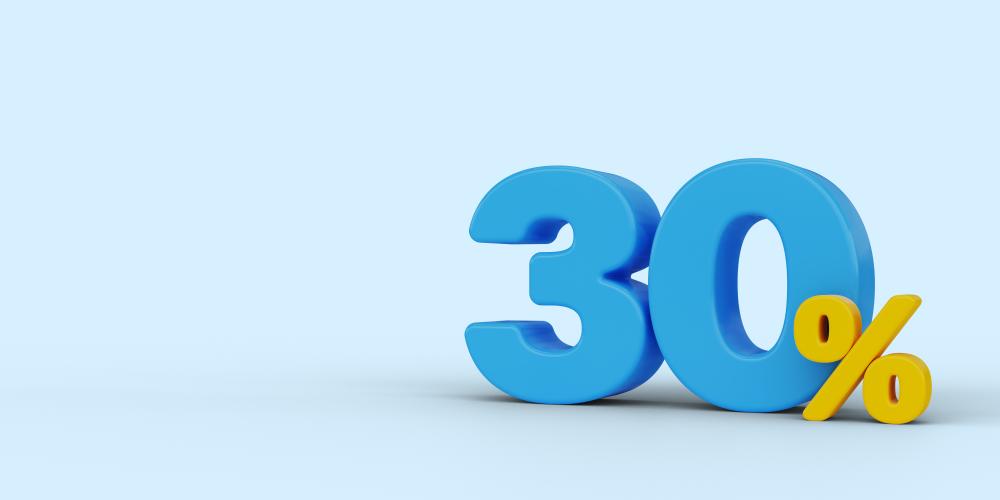The Importance of Domain Authority 301 Rebranding
When it comes to maintaining the online visibility and reputation of your website, few strategies hold as much weight as domain authority 301 rebranding. This technique ensures that all the hard-earned credibility of your current domain seamlessly transitions to a new one, safeguarding your SEO investments and user experience. Back in the early 2000s, I realized the impact firsthand when I helped a client transition their popular e-commerce site to a new domain. The 301 rebranding preserved their search rankings, demonstrating its importance.
In the competitive digital landscape, it's crucial to keep SEO value intact during domain shifts. As traffic is redirected from old URLs to new ones, domain authority 301 rebranding serves as an essential tool for businesses looking to rebrand or migrate without losing their position in search engine results. This method not only retains SEO value but also helps in maintaining consistent user experience.
Steps to Execute Domain Authority 301 Rebranding
Executing domain authority 301 rebranding is an art that requires precision and strategy. Here's how you can do it:
- Pre-check the New Domain: Start by making sure your new domain is active and in good health. Use tools like WHOIS to verify its status.
- Audit Existing Content: Analyze your current website to identify key pages and content for migration.
- Notify Stakeholders: Clearly communicate the transition to your audience and stakeholders using social media and newsletters.
- Setup 301 Redirects: Point your old URLs to new ones with 301 redirects to transfer SEO equivalents.
- Test Redirects: Conduct thorough testing to ensure redirects are functioning correctly.
- Monitor Performance: Use analytics tools to track domain performance post-migration, ensuring stability and quick troubleshooting.
By following these steps, you can implement domain authority 301 rebranding effectively, ensuring a smooth transition while preserving SEO capital.
A domain authority 301 rebranding emergency refers to situations where immediate action is needed to prevent significant SEO or branding setbacks. This could include sudden domain name changes due to legal issues, website hacks, or rebranding post-acquisition. In these scenarios, swift deployment of 301 redirects is necessary to minimize potential damage.
When a major retail client faced unexpected legal constraints that required a domain change overnight, employing 301 rebranding was critical. Quick action preserved their search engine credibility and protected their substantial e-commerce traffic from dropping overnight. Reacting promptly under such circumstances is vital to mitigate risks and maintain digital assets.
Benefits and Challenges of Domain Authority 301 Rebranding
While domain authority 301 rebranding offers numerous benefits, it is not without its challenges.
- SEO Preservation: Retain the SEO equity built over the years, ensuring your ranking power remains intact.
- User Experience Consistency: Redirects ensure seamless user navigation to your new domain, preserving brand loyalty.
- Unified Brand Identity: Consolidating under a single brand identity strengthens brand positioning in the market.
However, challenges such as temporary SEO fluctuations, the possibility of losing some backlinks, and user confusion can arise if not communicated effectively. Balancing these elements requires meticulous planning and execution.
During a major pharmaceutical rebranding for a client, we witnessed temporary dips in search rankings which were quickly mitigated through consistent communication and monitoring, illustrating the dual nature of 301 rebranding.
Leveraging Data for Successful Rebranding
Data-driven insights can significantly enhance your domain authority 301 rebranding efforts. Tools like Moz DA Checker provide crucial metrics that help evaluate the current domain authority and ensure an informed rebranding strategy. These insights illuminate areas for improvement and guide the allocation of SEO resources efficiently.
I recall optimizing link-building strategies by analyzing competitor URLs through Moz and tracking my client's domain authority improvements. This approach not only enhanced our credibility but helped us identify high-authority domains for new partnerships.
Focusing on data allows for strategic decision-making, ensuring that your rebranding efforts maximize impact without sacrificing existing gains.
What is Domain and Page Authority?
Domain and page authority checker tools provide an invaluable glimpse into the strength of websites. These metrics, particularly domain authority, serve as indicators of a site's ability to rank on search engines. With a score ranging from 1 to 100, they reveal the competitive edge a website holds in the digital sphere.
You might ask why these scores matter so much. Over two decades in the SEO industry have shown me that a higher domain authority often equates to increased visibility and trust. Businesses leverage this insight to fine-tune their SEO strategies, aiming to amplify their online presence and outshine competitors.
How to Use Domain and Page Authority Checkers
Utilizing a domain and page authority checker is a strategic move. Here's how you can make the most of these tools:
- Identify Your Current Standing: By checking both your domain and page authority, you gain clarity on where your site stands.
- Analyze Competitive Landscapes: Understanding your competitors' authority scores helps reveal potential SEO opportunities.
- Refine SEO Strategies: Use insights to strengthen your backlink profile with quality links.
My experience underscores the importance of regular monitoring. Just like tending to a delicate garden, frequent checks ensure your digital ecosystem remains robust and healthy.
Why Does Domain Authority Matter?
In the vast sea of digital content, standing out is crucial. Domain authority serves as a compass, guiding websites through turbulent SEO waters. A seasoned digital marketer knows that higher authority often means improved search rankings, leading to more organic traffic and business opportunities.
Through client consultations, I've observed that those who prioritize domain authority often achieve exponential growth. It's not just about having a high number; it's about fostering trust and authority in your niche, which inherently attracts more engaging and loyal audiences.
Remember, every successful SEO journey starts with a single step, and using a domain and page authority checker is the perfect start.
What Are Common Questions about Domain and Page Authority Checkers?
A question I frequently encounter is: "Can improving domain authority rapidly boost my traffic?" While enhancing domain authority is beneficial, it's a gradual process requiring consistent SEO efforts.
Another query often posed involves the accuracy of these tools. Based on my experience, top-tier checkers like those from Moz provide reliable metrics, crucial for strategic planning and execution.
The path to mastering domain and page authority is paved with curiosity and continuous learning--a venture every SEO enthusiast should embark upon.
The Importance of Domain Authority in SEO
As someone who has been analyzing SEO dynamics for over two decades, I can confirm that domain authority plays a critical role in understanding a website's search performance. While domain authority by itself isn't a Google ranking factor, it serves as a reliable indicator of how competitive a site is in its niche. I've seen countless examples where improving this metric has correlated with higher search rankings and increased traffic.
Domain authority scores, ranging from 1 to 100, are derived from a site's backlink profile, evaluating the quality and quantity of those links. Websites with higher domain authority tend to have more robust and authoritative backlink profiles. As your go-to for precision insights, Moz DA Checker provides tools to measure domain authority, helping you strategize your SEO efforts effectively.
How to Measure Domain Authority
Checking your domain authority is straightforward, thanks to tools like Moz DA Checker. These tools evaluate various factors, including linking root domains and quality of backlinks. With a simple input of your URL, you can instantly access your domain authority score. Monitoring these scores over time allows you to gauge the impact of your SEO strategies and backlink acquisitions.
Accurate measurement comes from comparing metrics across platforms like Ahrefs and Moz, providing a broader perspective on your site's SEO health. Remember, a single score shouldn't be the sole focus. Engage in practices that naturally enhance your domain authority through high-quality link building and content creation.
How Can I Enhance My Domain Authority?
Improving domain authority is a multi-faceted approach. Start by focusing on acquiring high-quality backlinks from respected sources within your industry. Create content that is not only valuable but also sharable, encouraging organic link building. Strategy is key, and consistent effort will pay off.
1. Audit Your Backlink Profile: Regularly check for toxic or spammy links and disavow them. This ensures your domain authority score isn't negatively impacted by low-quality backlinks.
2. Enhance On-Page SEO: Align content with search intent and ensure your website's user experience is top-notch, from mobile responsiveness to quick loading times.
3. Engage in Quality Content Creation: Address user queries with comprehensive and insightful content. Websites that offer value tend to attract more authoritative backlinks, positively affecting their domain authority.
Addressing Common Misconceptions About Domain Authority
There are several misconceptions about domain authority that I've encountered throughout my career. First, it's crucial to understand that domain authority is not the same as Google's PageRank, though both assess a domain's ranking potential. Domain authority comes from predictive metrics developed by Moz, which are not utilized by Google directly in their rankings.
Another common myth is that domain authority is static. This score is dynamic, changing as new backlinks are acquired or lost and as competitors' scores shift. So, tracking your progress regularly is essential for staying ahead. Finally, some might think that a low domain authority means a site can't rank. However, it's relative; even sites with lower scores can outperform competitors if their on-page SEO and content quality are strong.
What Are the Different Types of Authority Scores?
In the SEO world, authority scores vary. Domain authority evaluates the ranking potential of entire domains, while Page Authority assesses individual pages. Additionally, Brand Authority measures a brand's online presence and recognition, reflecting broader engagement.
- Domain Authority: Assessing domain-wide SEO potential.
- Page Authority: Measuring ranking potential for individual pages.
- Brand Authority: Evaluating brand influence and recognition across digital spaces.
Each of these metrics provides unique insights into different aspects of SEO strategy. Understanding these distinctions can help you focus your efforts where they'll be most productive.
Why is Domain Authority 301 Rebranding Critical in Today's Digital Landscape?
Domain Authority 301 rebranding is essential for maintaining your online presence and SEO value during domain transitions. When you change your domain, implementing 301 redirects ensures that your hard-earned search engine rankings and link equity are preserved, which is vital in retaining visibility and maintaining traffic flow. Imagine waking up to find that your website traffic has plummeted simply because you didn't redirect your old URLs to your new domain. By executing this strategy, you can also communicate changes effectively to stakeholders, reducing confusion and keeping your audience engaged. Have you ever faced a challenging domain switch? How did you handle it?
What Are the Steps Involved in Domain Authority 301 Rebranding?
Executing a Domain Authority 301 rebranding involves several strategic steps. Start by pre-checking the health of your new domain and auditing your existing content to decide what needs to be migrated. Communication is key--inform all stakeholders and your audience about the transition using various channels. Setting up 301 redirects from old URLs to new ones is crucial for SEO preservation. After implementation, test these redirects thoroughly to ensure they are working correctly. Finally, monitor your site's performance with analytics tools to catch any anomalies early. It's like moving houses; you want to ensure everything is set up perfectly before inviting guests over. What are some tools you've used that help monitor site performance post-migration?
How Can Domain and Page Authority Checkers Enhance Your SEO Strategy?
Domain and Page Authority checkers provide indispensable insights into your site's competitive standing. They help you understand your current domain and page authority, allowing you to strategize accordingly. By analyzing these metrics, you can identify opportunities for backlink building and refine your SEO strategies. These tools are particularly useful in benchmarking your site's performance against competitors. Have you considered how understanding your domain authority could open new doors for partnerships or collaborations in your niche? It's fascinating how regularly monitoring these scores can be akin to checking your credit score--essential for long-term growth.
What Are the Common Misconceptions About Domain Authority?
One major misconception is that Domain Authority is a direct ranking factor used by Google, which it is not. Instead, it's a predictive metric developed by Moz to estimate how likely a site is to rank in search results. Another myth is that a low Domain Authority means your site can't succeed in SERPs. That's not entirely true--sites with excellent content and on-page SEO can still rank well, even with a lower DA. It's important to understand that Domain Authority is dynamic, meaning it fluctuates as you acquire or lose backlinks. What misconceptions have you encountered about Domain Authority, and how did you address them?
Why Use Domain and Page Authority Checkers for Your Site?
Domain and Page Authority checkers are pivotal tools for any SEO strategy, providing real-time insights into how your site fares against competitors. With the ability to analyze bulk URLs, they offer a macro view of your site's SEO health, helping you make informed decisions. By comparing your metrics across platforms like Moz and Ahrefs, you gain a comprehensive understanding of your SEO landscape. These tools are akin to a compass, directing your SEO efforts to areas that need improvement. When was the last time you checked your domain authority, and did it lead to any changes in your strategy?
What Are Some Advanced Insights for Understanding Domain Authority?
Advanced insights into Domain Authority involve understanding its calculation, which is based on how your site's backlink profile compares to others. It's not just about the number of backlinks but their quality. Engaging high-authority sites within your niche to link to your content can significantly impact your DA score. Also, understanding the interplay between Domain Authority and Page Authority can guide you in optimizing not just your site's root domain but its individual pages. How do you leverage this understanding for your SEO strategies? It's like playing chess--each move should be deliberate and strategic.
What Are the Benefits of Domain Authority 301 Rebranding?
The benefits of Domain Authority 301 rebranding are manifold. It preserves your SEO capital, ensuring that the authority your old domain holds is transferred to the new one. This is crucial for maintaining search engine rankings and the trust you've built with your audience. Moreover, it can fortify your brand identity, especially during mergers or acquisitions. Imagine how seamless the experience is for users when they're automatically redirected to your new domain without losing the familiar experience they've come to expect. Has your brand undergone a rebranding recently, and what was the impact on your traffic?
What Qualifies as a Domain Authority 301 Rebranding Emergency?
Domain Authority 301 rebranding emergencies typically occur when there's an urgent need to switch domains due to unforeseen circumstances such as legal issues, hacks, or acquisitions. In such cases, immediate action is required to implement 301 redirects to prevent significant SEO and traffic losses. Think of it as a fire drill for your website's digital presence. The goal is to react quickly to safeguard your assets. Have you ever had to make a rapid domain change? How did you ensure that your SEO ranking wasn't adversely affected?


